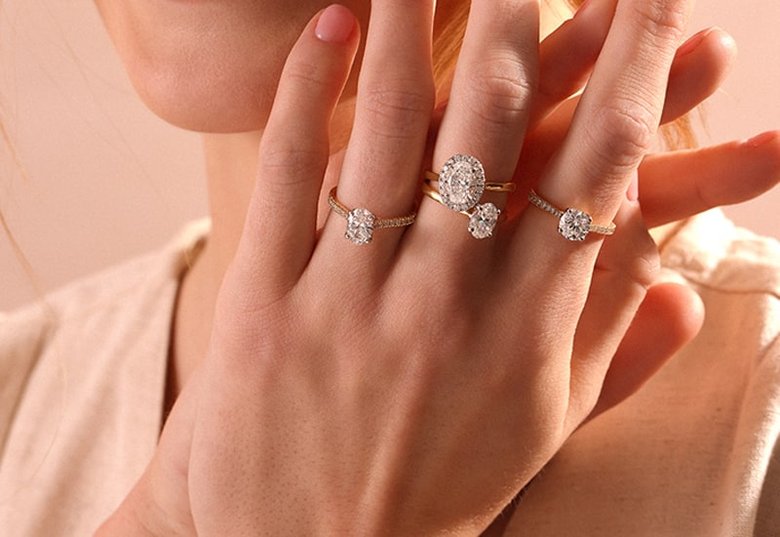Should I Get a Gold Ring or Lab-Grown Diamonds?
In the evolving landscape of gems, the decision between a should I get gold ring and lab-grown diamonds has become increasingly significant. The two options have their unique merits, catering to diverse inclinations and values. As we navigate the intricacies of this choice, it is essential to investigate the qualities, benefits, and long haul worth of both gold rings and lab-grown diamonds.
Understanding the Appeal of Gold Rings
Gold has been an image of riches, influence, and prestige for a really long time. Its enduring allure lies in its intrinsic worth, timeless excellence, and social significance. A gold ring, whether plain or embellished with gemstones, addresses a tradition of style and extravagance. The inherent worth of gold, as a precious metal, guarantees that a gold ring fills in as an embellishment as well as a tangible resource. The versatility of gold permits it to be made into various designs, from classic to contemporary, making it a leaned toward choice for the individuals who appreciate both tradition and innovation.
The durability of gold is another compelling element. Gold, especially when alloyed with different metals, is resistant to tarnish and corrosion, making it a lasting investment. This durability guarantees that a gold ring can be gone down through generations, maintaining its shine and significance over the long haul.
The Rise of Lab-Grown Diamonds
Lab-grown diamonds have arisen as a revolutionary alternative to regular diamonds. These diamonds are created using cutting edge innovation that replicates the regular diamond formation process, resulting in stones that are chemically, physically, and optically identical to their normal partners. The allure of lab-grown diamonds lies in their ethical and environmental benefits. Unlike normal diamonds, which are frequently associated with worries about mining practices and their impact on the environment, lab-grown diamonds offer a more sustainable option.
The most common way of creating lab-grown diamonds requires significantly less energy and doesn’t involve the ecological disruption brought about traditional mining. This settles on lab-grown diamonds an attractive decision for environmentally conscious consumers. Moreover, lab-grown diamonds are sans conflict, meaning they are not associated with the social and ethical issues that can go with the mining of regular diamonds in certain regions.
Comparing Esthetics and Design Possibilities
With regards to esthetics, both gold rings and lab-grown diamonds offer a wide scope of design possibilities. Gold rings can be made in various styles, from intricate vintage designs to smooth present day bands. The choice of gold tone — yellow, white, or rose — adds one more layer of customization, allowing individuals to choose a shade that supplements their skin tone and individual style.
Lab-grown diamonds, then again, can be cut into various shapes and sizes, offering flexibility in design. Whether set in a simple solitaire ring or an elaborate multi-stone setting, lab-grown diamonds can take care of diverse preferences. The clarity and brilliance of lab-grown diamonds are indistinguishable from regular diamonds, ensuring that they deliver a similar visual impact.
Cost Considerations and An incentive for Cash
Quite possibly of the main difference between gold rings and lab-grown diamonds is the expense. Gold rings, especially those made of higher karat gold, can be a considerable investment because of the intrinsic worth of gold. In any case, this investment frequently retains its worth after some time, making gold a steady choice for those looking to combine extravagance with long haul financial security.
Lab-grown diamonds, while visually identical to normal diamonds, are and large more reasonable. This cost advantage permits consumers to buy bigger or higher-quality stones at similar cost as more modest, normal diamonds. The affordability of lab-grown diamonds makes them accessible to a more extensive audience, providing the opportunity to claim a stunning piece of gems without compromising on quality or ethical standards.
Ethical and Environmental Impact
The ethical implications of adornments choices have become increasingly important to consumers. The production of lab-grown diamonds tends to many of the worries associated with traditional diamond mining, like human rights violations and environmental degradation. By choosing lab-grown diamonds, consumers can guarantee that their buy doesn’t contribute to these issues.
Gold, depending on its sourcing, can likewise raise ethical worries. In any case, many diamond setters currently offer fair-exchange and ethically obtained gold, ensuring that the metal has been mined in a manner that regards both the environment and the rights of laborers. Consumers who prioritize ethical considerations can decide on such options, aligning their adornments choices with their qualities.
Durability and Longevity
While investing in fine gems, durability is a key consideration. Gold rings, particularly those made from higher karat gold, are known for their resistance to tarnish and corrosion. This goes with them a brilliant decision for daily wear, as they are more averse to give indications of mileage over the long run. The longevity of gold guarantees that it can be delighted in for a long time, frequently becoming a cherished heirloom.
Lab-grown diamonds are likewise highly solid, ranking 10 on the Mohs size of hardness, equivalent to regular diamonds. This hardness makes them resistant to scratches, ensuring that they maintain their brilliance and clarity over the long run. A ring set with lab-grown diamonds can withstand the rigors of daily wear, making it a practical choice for those seeking both excellence and resilience in their gems.
Resale Worth and Investment Potential
The resale worth of adornments is an important element for many purchasers. Gold rings, because of the intrinsic worth of gold, frequently retain or try and appreciate in esteem over the long run. This makes them a sound investment, particularly in times of economic uncertainty when gold is viewed as a place of refuge resource.
Lab-grown diamonds, while more reasonable initially, don’t as of now hold a similar resale esteem as regular diamonds or gold. The market for lab-grown diamonds is still evolving, and while they offer fantastic incentive for cash at the time of procurement, they may not provide similar financial return as gold or regular diamonds if exchanged.
Personalization and Sentimental Worth
Adornments frequently carries significant sentimental worth, especially when it is customized to reflect individual taste or remember special occasions. Gold rings offer various opportunities for personalization, whether through engraving, the addition of gemstones, or the choice of a unique design. The ability to tailor a gold ring to individual inclinations improves its sentimental worth, making it a meaningful gift or a cherished individual possession.
Lab-grown diamonds additionally offer opportunities for personalization. With the ability to choose the cut, variety, clarity, and carat weight, consumers can make a piece of gems that is uniquely theirs. The ethical and environmental benefits of lab-grown diamonds may likewise upgrade their sentimental incentive for the people who prioritize sustainability and social responsibility in their purchasing decisions.
Making the Final Decision
The decision between a gold ring and lab grown diamonds ultimately boils down to individual inclination, budget, and values. The people who appreciate the timeless allure and intrinsic worth of gold might incline towards a gold ring, especially if they look for a piece of gems that will retain its worth over the long haul. Then again, consumers who prioritize ethical considerations, environmental sustainability, and cost-effectiveness might find lab-grown diamonds to be the ideal choice.
The two options offer an abundance of possibilities regarding design, durability, and personalization. Via carefully considering the attributes of every, consumers can pursue an informed choice that aligns with their esthetic preferences, ethical qualities, and financial objectives.


